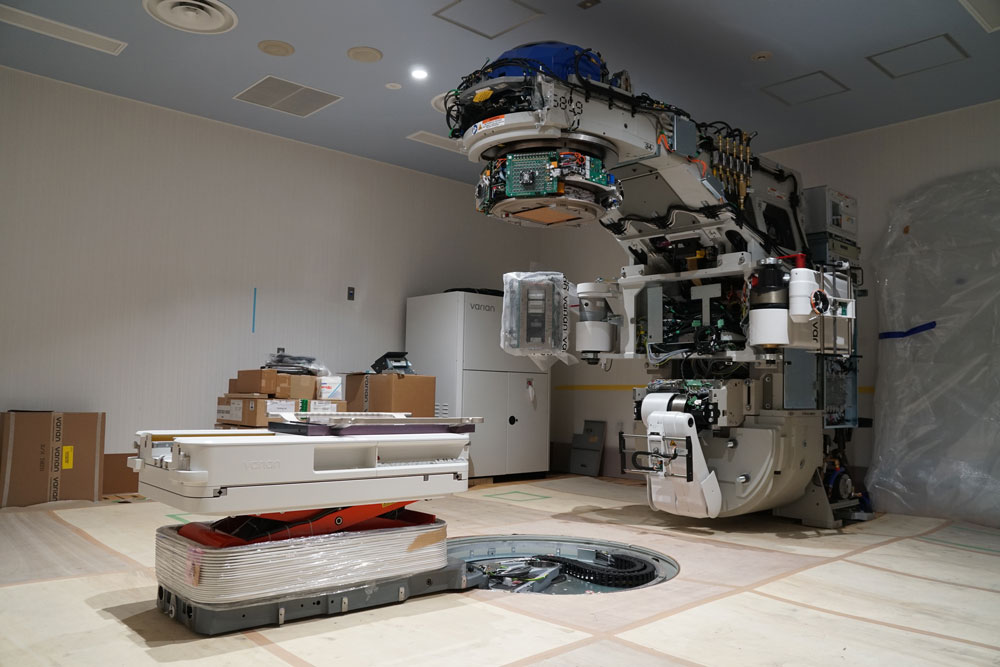This article is written by Dr. Shoh Mafune, a radiation oncologist at Sapporo Medical University Hospital.
I made another poster as I did last year for information sessions of our residency program. This poster is a tribute to the best shark movie everyone knows and we need to share to understand its significance for radiation oncology.
The fundamental goal of radiation therapy is to deliver radiation to a target such as malignant tumor while minimizing the amount of radiation absorbed in healthy tissue. Beam shaping is an important way to avoid radiation to healthy tissue and critical structures. Conventional collimators, called "jaws", are used to shape a rectangular treatment field; however, since the treatment volume is usually not rectangular, additional shaping is required. Therefore, modern linear accelerators (LINAC) are equipped with separate alloy blocks called multileaf collimators (MLC), which are made of lightweight, highly shielded tungsten and allow the intensity of the radiation to be adjusted by rapidly moving the MLCs.
In short, LINACs have two types of variable collimators: jaws, which roughly shape the radiation, and multileafs, which finely adjust the radiation.
This "white shark", Synergy made by Elekta, in our hospital has a pair of great jaws and as many as 80 MLCs. Since radiation is invisible to eyes, it is difficult to know if the treatment field shaped adequately by the collimators. This white shark can also output blue light to make the shape visible.
I created the special plan with a radiation therapy planning system (TPS) to give him a number of teeth.
This is how the mysterious photos were created, as if we were under the sea. I would be very happy if you share this article.
***
Shoh Mafune, M.D.Fellowship (Radiation Oncology)
Medical School: Sapporo Medical University
Internship: Aizawa Hospital
Radiology Residency & Radiation Oncology Fellowship : Sapporo Medical University













